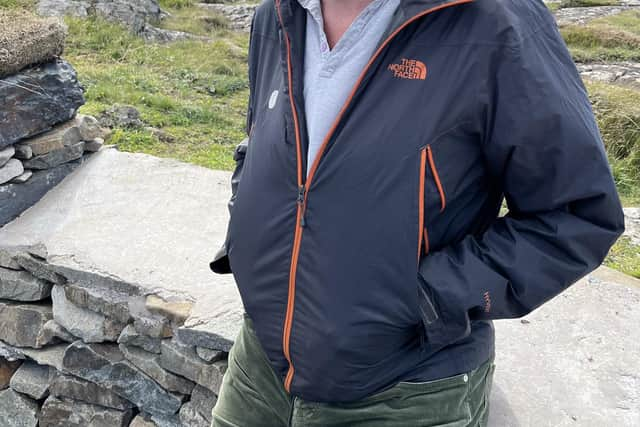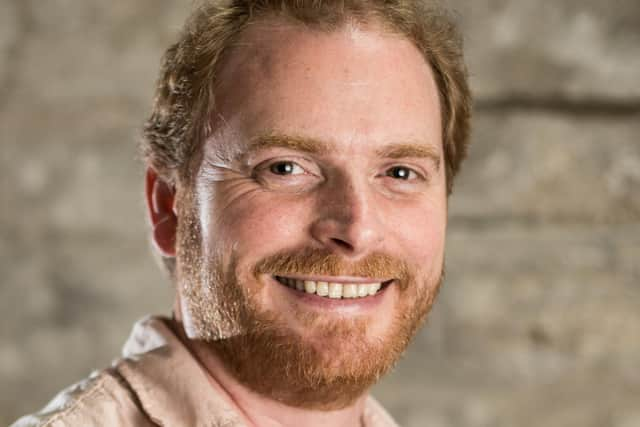University of York archaeologist Jim Leary wants to 'reanimate' the past with book Footmarks
“But we're also warm and funny and, yet, when we find a skeleton from the past, we never think about them as being warm and funny, or rude and nasty, perhaps, or whatever they were. We think of them as a set of bones that can be analysed. And so I am all for humanising the past.”
His new book Footmarks: A Journey Into our Restless Past, which is released on July 6, is a step in that direction.
Advertisement
Hide AdAdvertisement
Hide AdThe book draws on his academic expertise, love of walking in nature - he is particularly inspired by holloways, sunken rural lanes which have been trudged down over time, often arched by trees - and grief to “reanimate” past lives.


Dr Leary, who is settled in the North York Moors, was born near Bath but growing up lived around the world in places such as Malaysia, Fiji and Cyprus.
After completeing a degree in archaeology in Cardiff in 1998, he joined Pre-Construct Archaeology Ltd in London in 1998. In 2005 he moved to the research department at what was English Heritage, conducting major excavations into Silbury Hill in 2007 and 2008, as well as in the Pewsey Vale. He joined as a lecturer in Field Archaeology at York in 2018.
He specialises in the years between 10,000 BC through to about 2,000 BC, when a transition from the Mesolithic and the Neolithic periods occurred.
Advertisement
Hide AdAdvertisement
Hide AdHe has put his name to numerous academic books and has had articles published in the likes of Antiquity Journal.


“But this book is different,” says Dr Leary, 47. “Obviously, it’s for a much wider audience, it's much more personal, and I wanted to get across my passion for the subject. I love walking, and I love paths, particularly holloways and as an archaeologist, naturally, when I walked down these things, I wanted to understand their history. I want to know, why are footpaths lined with blackberry bushes and crabapple trees? There’s got to be a reason. They don't exist elsewhere in the countryside, they just literally line our paths. So that's what I wanted to dip into, and I wanted to understand, how old are these holloways? They’re not engineered but literally worn down by generations of feet and hooves and wheels tramping over them.”
The book, which he started writing in 2017 but had been thinking about for years before, tells the stories of people on the move. It delves into ancient footmarks and archaeological evidence to demonstrate how history has been continuously shaped by movement, migration and pilgrimage over the last three million years. The lives of hunter gatherers, Romans, wayfarers and medieval pilgrams pop up as the book threads backwards and forwards in time.
The work was born partly out of Dr Leary’s frustration with some aspects of academic study: hunter gatherers, for example, can be looked at simplistically through their “optimal foraging strategies” and assumed to have taken smooth journeys from one place to another, which he does not think matches up to reality.
Advertisement
Hide AdAdvertisement
Hide AdDr Leary says: “My experience of moving in the world is one that's very sensory, it's varied, and I sometimes stride and skip and hop, and other times I meander and rove, and other times I'm tired or depressed and I have more of a stooping, trudging changes depending on where I am, when I am and what I'm doing and feeling at the time. And I don't move in purely economic terms.”
Grief, too, has been a major motivation, after Dr Leary’s older brother, Piers, died in 2003.
“He was 29 and he’d just got married. And they wanted a new life, they wanted to start a family and so they moved from the south of England up to the Lake District, which they both absolutely loved. He had just got this wonderful job. Just all of this optimism and positivity. And on the second day of this new job he was commuting on the road and for some reason, we don't know why, swerved out of his lane into the other lane and was hit and killed.”
Everything changed, says Dr Leary, and “we went from a happy, big family of five to what felt like a very small family” with his younger brother and father – his mother, Jenny, had died of cancer a few months before Piers.
Advertisement
Hide AdAdvertisement
Hide AdDr Leary says: “What I have of him now are just still photographs and my children, who are sort of young teenagers now, they never knew him and they only know him through these photographs that are around the house. To them, he’s static, and that really frustrated me.
“So that's where we come back to this idea, when I look at this Neolithic house, and I see flint dotted along the floor, left in exactly the same place, or I look at the feasting debris...I don't want to see it as static. I don't want anyone else to. I want us to see the past as animated and I want, somehow, in the process of thinking about this and writing about this, I want to reanimate my brother.
“It’s what I call in the book ‘the stillness of the past’. I don't want him to get stuck in the stillness of the past. And I don't want my children to think of him as this sort of static image.”
By writing about Piers, Dr Leary has tried to evoke his brother’s distinctive side-to-side walk, which gave him a “wonderful, jaunty look” and present him as the “very charismatic individual” he remembers.
Advertisement
Hide AdAdvertisement
Hide Ad“All of this comes out of that sense of grief and this sense of not wanting anything in the past, least of all my brother, to be static, to be stuck, to be still. I want them to be alive to everyone and in some ways, I suppose, let him live again.”
- Footmarks is available to pre-order now, and Dr Jim Leary will be appearing at Waterstones York on Tuesday, July 11.